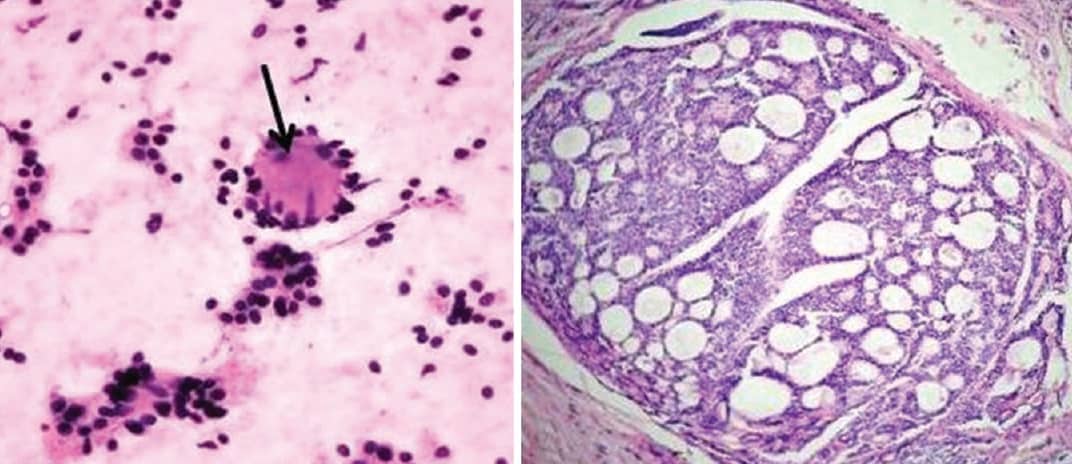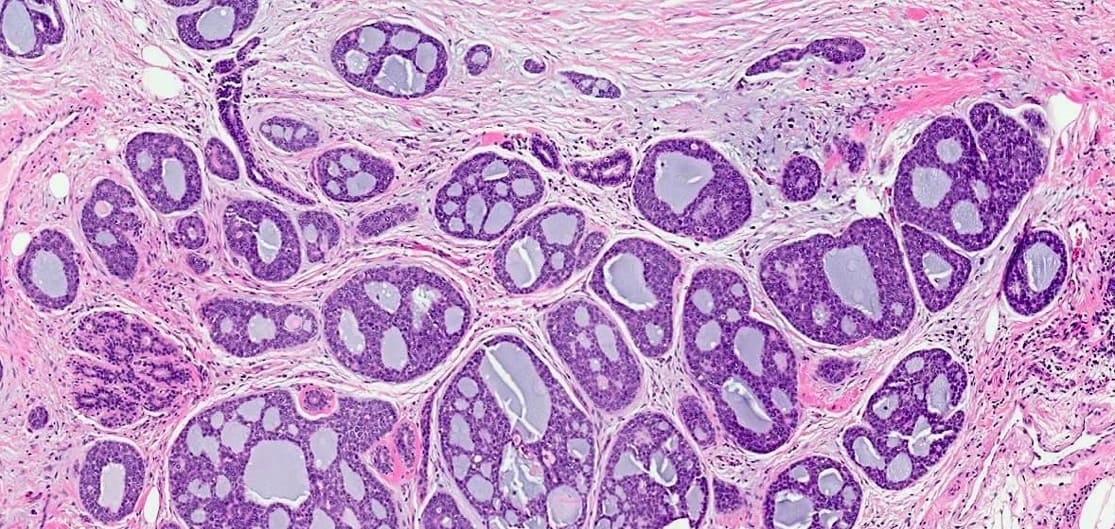Hey reader, I hope you are doing well in these tough times. As the field of HealthLine and medicine is getting bigger day by day, there is also a wide range of articles and blogs available on the internet which may provide you with completely true information.
You can easily access the information for which earlier people had to struggle a lot.
Here in this article, you will be cleared with all your doubts regarding ” Adenoid Cystic Carcinoma ” disease, which most people are unaware of.
Adenoid Cystic Carcinoma
It is a rare type of cancer that mostly attacks the salivary glands, the breast, and the uterus. Though, it can occur in any part of the body. It is a genetic disease that occurs mainly due to mutation and MYB Gene. It spreads along the nerves or through the bloodstream and causes long periods with no growth.
Epidemiology It presents as painless swelling in the cheeks. ACC accounts for about one% of the malignant tumor of the head and neck and 10% of salivary gland tumors. It basically affects the elderly population but rarely can involve any age group. It is most commonly seen in women [male: Female = 4:6]
Pathophysiology (Genetics) It occurs due to the overexpression of genes like SOX4, Casein, Kinase 1-epsilon infrizaled 7, and many more.
ACC Histopathology
- These tumor cells are relatively uniform and were found with a variety of patterns in various researches.
- There are three growth patterns that are
- Cribriform
- Tubular pattern
- Solid Patter
Adenoid Cystic Carcinoma of Lungs
Primarily ACC of lungs is known as a rare entity. As informed earlier, surgery is believed the main treatment for it. The trachea, Bronchus, and Peripheral lungs are the locations in human lungs where the ACC mostly shows its effects.
Adenoid Cystic Carcinoma of Palate
The palate is the most common site where the ACC arises. While the other sides are the floor of the mouth, tongue, and lip.
ACC is one of the three most common types of salivary gland tumors. The other two types are Pleomorphic Adenoma and Mucoepidermoid Carcinoma.
Other Names Of ACC
ACC is known by many other names, which are mentioned below:
- Adenocyst
- Malignant
- Cylindroma
- Adenocystic
- Adenoid cystic

Adenoid cystic carcinoma symptoms
This disease has a distinctive pattern. It is recognized by the symptoms such as bulging of the eyes and changes that may occur in the vision. The patient may feel some respiratory symptoms such as shortness of breath [also known as Dyspnea] or changes in speech. These symptoms vary depending on the location of the tumor, which could either be Salivary glands, Lacrimal glands, Tracheobronchial tree, or Larynx.
- The most common symptom is painless, slowly growing mass in the region of mouth, face, head, or neck.
- 40% of the patient develop metastatic disease, one of its factors is :
-
- Size – More than 3 cm, involvement of regional lymph node
- The patient may have difficulty swallowing.
- It is also possible that one may have paralysis in any of the facial nerves.
Note: Most common sites of metathesis are lung, bone, liver, breast, skin.
Also Read:
Causes Of ACC
No one has become successful yet in knowing the exact cause of; however, according to some researches, Genetic changes are a cause of ACC. It is developed by a protein produced by the fusion of two transcription factor genes[ MYB-NFIB ]. This gene monitors the rate at which the cell divides and then limits cell growth. These changes can not be inherited but are presented only in the cancer cells. These changes may possibly come from the environment. ACC is not related to any type of addiction like alcohol or tobacco, or infection, unlike other cancers.
Survival Rate of ACC Patients
It has been noted that people suffering from Adenoid Cystic Carcinoma may live at least five years after the detection of the disease. If treated at the early stage, the survival rate of the patient may possibly remain at 84% when treated by the professionals, and the patient may live a quality life though, after 15 years of survival, the rate declines to just 45% approx. But this situation only occurs if the tumor is recurring and under progress.

Treatment
Adenoid Cystic Carcinoma is an unpredictable chronic tumor. Researches are unsuccessful in finding any proper treatment yet for this disease; though it can be controlled by many other treatments like radiation therapy, physical therapy, or mental health therapy it cannot be cured or fully removed from a person’s body. If a person is affected by this cancer cell, then it will last for the whole life.
However, the patient may be provided with a quality life by a course to maintain the survival rate to the highest through some healthcare professionals, including physician assistants, oncology nurses, dietitians, social workers, pharmacists, and others.
The main treatment of ACC is surgery, which means a complete resection of the tumor with negative surgical margins. Surgical treatments have a 30% to 75% risk of 5 to 10 years of recurrence. To prevent the local relapses, post-surgery radiation therapy has been tried with good success rate.
Other than surgery, the other treatments may include
– Radiation Therapy, which is performed by Radiation Oncologist.
– Ear, Nose, and Throat treatment through an Otolaryngologist.
– Reconstructing the facial and body tissues by the surgeon. This is mainly done to improve the person’s appearance for the psychological satisfaction of the patient.
– Ortho treatment by the Oncologic dentists specified for head and neck cancer.
– An audiologist, physical therapist, speech pathologist, and a mental health provider for managing the issues in the other parts of the body.
However, after many years of research, the researchers discovered a new and more effective treatment for ACC by the use of molecularly targeted drugs which block the cancer gene that results in a stopped growth of this cancer. Now a new way has been discovered to turn off the MYB-NFIB fusion gene. There is also a combination treatment to turn off both – cancer gene and other critical signal pathways.
Conclusion
Adenoid Cystic Carcinoma is an unpredictable, slowly growing tumor, also known as a malignant tumor. It is difficult to recognize the reason if your mouth has developed the cancer cells. Sometimes a person with various factors of risk does not develop cancer, but sometimes the person with no risk factors even develops it.
Hence there should be an awareness about the existence of this disease among the dental fraternity so that an early diagnosis may be possible to provide a better cure to the patients. Salivary gland tumor should be considered in the differential diagnosis of aggressive lesions in the maxilla and mandible and especially when the aggressive lesion is involving the palate.
ACC being a fatal disease has low response rate to chemo therapy; hence there was no recommended therapy for it, but now the researchers has discovered a new treatment for it in which the molecularly targeted drugs are used to turn off the cancer gene.
